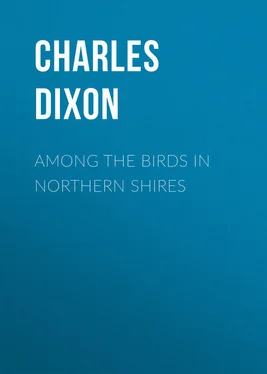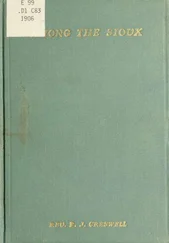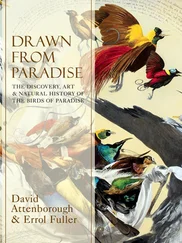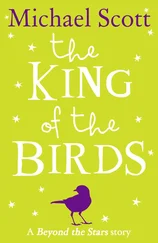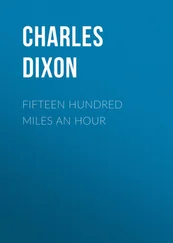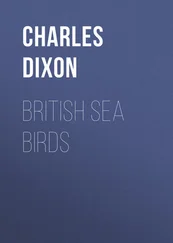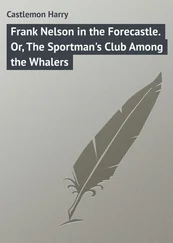Charles Dixon - Among the Birds in Northern Shires
Здесь есть возможность читать онлайн «Charles Dixon - Among the Birds in Northern Shires» — ознакомительный отрывок электронной книги совершенно бесплатно, а после прочтения отрывка купить полную версию. В некоторых случаях можно слушать аудио, скачать через торрент в формате fb2 и присутствует краткое содержание. Жанр: foreign_antique, foreign_prose, на английском языке. Описание произведения, (предисловие) а так же отзывы посетителей доступны на портале библиотеки ЛибКат.
- Название:Among the Birds in Northern Shires
- Автор:
- Жанр:
- Год:неизвестен
- ISBN:нет данных
- Рейтинг книги:3 / 5. Голосов: 1
-
Избранное:Добавить в избранное
- Отзывы:
-
Ваша оценка:
- 60
- 1
- 2
- 3
- 4
- 5
Among the Birds in Northern Shires: краткое содержание, описание и аннотация
Предлагаем к чтению аннотацию, описание, краткое содержание или предисловие (зависит от того, что написал сам автор книги «Among the Birds in Northern Shires»). Если вы не нашли необходимую информацию о книге — напишите в комментариях, мы постараемся отыскать её.
Among the Birds in Northern Shires — читать онлайн ознакомительный отрывок
Ниже представлен текст книги, разбитый по страницам. Система сохранения места последней прочитанной страницы, позволяет с удобством читать онлайн бесплатно книгу «Among the Birds in Northern Shires», без необходимости каждый раз заново искать на чём Вы остановились. Поставьте закладку, и сможете в любой момент перейти на страницу, на которой закончили чтение.
Интервал:
Закладка:
Charles Dixon
Among the Birds in Northern Shires
PREFACE
The present volume must be regarded more as a popular introduction to the bird-life of our northern shires than in any way as an exhaustive faunal treatise, although at the same time we believe almost every indigenous species has been included. For twenty years we lived surrounded by these northern birds, so that we may fairly claim to have served our ornithological apprenticeship amongst them. With the birds of South Yorkshire and North Derbyshire we are specially familiar; whilst repeated visits not only to the Lincolnshire, Yorkshire, and Northumbrian littoral, but farther afield into Lancashire, and various parts of the Lowlands and the Highlands of Scotland, have enabled us to acquire much personal information relating to the avifauna of many a northern shire.
The difference between the avifaunæ of the northern and southern shires is strongly marked in many respects. Their study makes a record of avine comparisons of the most intense interest. The important effects produced by latitude and climate upon the bird-life of these widely separated areas make material for fascinating investigation, and have been fully dwelt upon as opportunities were presented. This variation in avine phenomena is not only far too often entirely ignored, but is apt to lead the student of bird-lore astray; due allowance has to be made in many cases for this difference in latitude, and all that it involves. The present volume, then, to a great extent a study of ornithological comparisons, will, we trust, be of some service to the bird lover or the bird student in his task of making allowances.
Unquestionably these northern shires from an ornithological point of view are much more interesting than the southern, and especially the south-western counties. Their avifauna is richer, and presents far greater variety, notably during the breeding season; whilst the marvellous phenomenon of Migration there unfolds itself each season in a manner that is never remarked elsewhere.
CHARLES DIXON.Paignton, S. Devon.
CHAPTER I
BY UPLAND STREAMS
There are few things more interesting to the lover of bird-life than the comparison of ornithological phenomena as they are presented in various localities, separated, it may be, by but few degrees of latitude. Not only does this apply to the species themselves – for even in our own islands the geographical distribution of birds conforms a good deal to latitude, – but to their migrational movements, their resumption of voice, their seasons of reproduction, their gatherings and movements generally, and finally to not a few habits that appear to be confined within narrow territorial limits. We have already dealt with bird-life in its many aspects in southern haunts with a view to the comparison of avine phenomena with that of more northern localities; we now propose in the present volume to review the most salient ornithological characteristics of certain favoured northern shires, especially with the object of bringing them out in contrast by their comparative study. The ornithologist with a southern experience, studying bird-life in a northern county – say in Yorkshire, for example – will soon find that the avifauna of the two areas, although it possesses much in common, is in many respects different. Birds that he was wont to find common in southern haunts are rare here; others that were scarce in the south, and which he was apt to regard even as rarities, are quite common. Not a few species are met with that are seldom normally seen in southern haunts, and opportunities are afforded him of studying the nesting economy of species, the breeding areas of which are decidedly boreal. Then, again, the change of latitude involves a change of climate, especially in winter; slight, perhaps, it may be, comparatively speaking, but yet sufficient to influence the habits and movements of birds in quite a different way from those prevailing in the milder atmosphere of southern haunts. Birds that sing all the winter through in these southern shires are silent here at that season; others that are sedentary there are of migratory habits in the wilder and colder north – in obedience to those climatic influences that act upon the food supply, and so on. The farther north he goes the more acute will the contrast in avine phenomena become; and in species common to the two areas – to northern and southern counties respectively – he will find differences of from one to two months in the ornithological calendar. Lastly, he will meet with a multitude of interesting forms, both in summer and in winter, that are normally strangers to southern localities at one season or the other, or at both seasons.
We will commence our observations by an investigation of the bird-life along the upland streams – not in their lower and quieter reaches, but at some elevation up the hillsides where the waters hurry and tumble along over rocky beds and between more or less precipitous banks fringed with alders, mountain-ashes, bracken, and brambles. The southern counties can boast no such streams; and even in the wilder south-west of England the becks are wanting in that grandeur that characterizes most of these turbulent northern waters. For twenty years or more we lived surrounded by them and within ear of their noisy clamour; whilst the birds upon their banks were our constant companions summer and winter alike. To our mind the ideal upland stream is one of the most picturesque features in the Peak district. They may be grander and wilder farther north, but with experiences of them in the remote Highlands and the Hebrides in mind, for romantic charm and wealth of bird-life these Derbyshire and Yorkshire brooks, in our opinion, remain unequalled. Almost every valley in the Peak can boast a streamlet of some kind. Some of course are more imposing than others, drain larger areas of upland, and contain a much greater volume of water. Some plough their way across the open moorland, their bed in summer being dry or nearly so; whilst others purl down wooded valleys and along well-timbered bottoms, between the ridges of millstone grit that are such a prominent feature in this particular kind of country. In their higher and wilder reaches such rivers as the Dove, the Wye, and the Derwent – all beloved by the angler for trout and grayling – may be taken as very excellent examples of upland streams. The Rivelin, with its charming branches of Blackbrook and Wyming brook, and itself a tributary of the now polluted and ill-used Don, upon which grimy Sheffield is partly situated, were all favourite streams of ours rich in ornithological associations. So, too, was the Sheaf, with once picturesque Meersbrook, especially in its upper waters between the villages of Dore and Hathersage.
Were we asked to name the most characteristic bird of these upland streams we should unhesitatingly answer, the Dipper. Not that the bird can be regarded as plentiful anywhere; and we know not a few streams where this engaging species has dwindled seriously in numbers during the past twenty years, due partly to the senseless persecution of keepers and others, and partly to the much greater number of people that wander along the banks nowadays compared with years ago. Be this as it may, the Dipper is still sparingly dispersed along most of the streams suited to its requirements. Its exclusive habits tend to characterize it as rarer than it actually is, and its peculiarity of keeping a length of water reserved for itself and its mate creates an impression of absolute scarcity which in many cases does not actually exist. No wonder the old school of naturalists were at a loss to assign a place in their classifications to this curious bird. Brisson included it among the Sandpipers and called it Tringa merula aquatica; but Linnæus, with more discernment, associated it with the Passeres in his genus Sturnus, which is now restricted to the typical Starlings.
Читать дальшеИнтервал:
Закладка:
Похожие книги на «Among the Birds in Northern Shires»
Представляем Вашему вниманию похожие книги на «Among the Birds in Northern Shires» списком для выбора. Мы отобрали схожую по названию и смыслу литературу в надежде предоставить читателям больше вариантов отыскать новые, интересные, ещё непрочитанные произведения.
Обсуждение, отзывы о книге «Among the Birds in Northern Shires» и просто собственные мнения читателей. Оставьте ваши комментарии, напишите, что Вы думаете о произведении, его смысле или главных героях. Укажите что конкретно понравилось, а что нет, и почему Вы так считаете.
